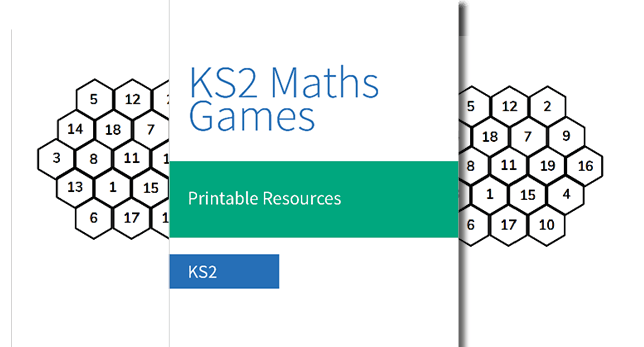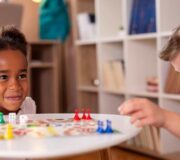26 KS2 Maths Games For School And Home: Fun, Free Maths Activities For Year 3 to Year 6
At KS2 maths games provide an essential bridge between the playfulness of maths in KS1 and the more rigorous mathematical concepts that children have to learn from year 3 onwards.
Children love playing games, whether that’s just running around playing tag at break time or sitting down for an afternoon’s board game play at home. Mathematical games, such as multiplication games, harness the fun and motivation of ‘normal’ games, and, when incorporated into a primary school maths lesson, turn ordinary class work into something more interactive, more fun, and potentially more memorable.
For any maths games sceptics among you, you may be interested in reading about the arguments for and against ‘making maths fun’ and also the science of learning and memory in the classroom. Used appropriately they can hit the sweet spot of supporting children to learn effectively while being enjoyable and engaging.
When to use KS2 maths games
At KS2 maths games are often seen as a ‘filler’ activity, or something to do at the end of term, but mathematical games in the KS2 classroom can be so much more. Maths games are also fantastic for enabling children to explore fundamental number concepts and they can allow children to take learning further, through the deepening of mathematical understanding and reasoning skills.
They provide opportunities for practice, whether they be as a starter activity, the main activity, as an alternative to a worksheet, or a chance to consolidate learning at the end of the lesson. Teachers are able to sit back and observe the games, making an assessment of children’s understanding in the process.
It is important that children are provided with repeated opportunities to play the same games. This is because the mere act of learning a new game will contribute to the cognitive load of the maths activity. The sooner the rules of the game are internalised, the quicker the children’s focus will be on the maths involved.
How to use these KS2 maths games
There is absolutely no expectation that you should try out all these maths games with your key stage 2 class but we hope that the list below gives you enough fun games to draw on whenever you’re looking to develop or practise mathematical skills at school – or provide some ideas for home learning.
The maths games for KS2 in this article have been organised according to year group but many games are suitable for children of different ages, sometimes with small adjustments to the numbers used. One of the easiest ways to increase the level of challenge of any maths activity or maths problem is to change all the whole numbers into decimal numbers.
KS2 Maths games printables
All the printable resources you'll need to complete these games
Download Free Now!Maths games for year 3
Year 3 maths games are great for consolidating children’s understanding of place value, in addition to working on mental addition, subtraction and multiplication skills. Times tables are a key focus for children in year 3, as they work towards the target of learning all the tables to 12 x 12 by the end of year 4. For this reason, I have also included several simple times table games to engage children in learning their tables.
Year 3 maths game 1: place value battle
This is a good KS2 maths game for helping children understand the concept of place value and how the position of a digit in a number affects its value. In year 3, children are expected to recognize the place value of each digit in a 3-digit number, but the game can be adapted for different age groups by changing the number of digits in the number.
What you will need to play:
- 2 or more players
- A set of 0-9 digit cards
- Place value baseboard (hundreds, tens and ones)
How to play:
- This can be played in pairs or small groups..
- Shuffle the 0-9 digit cards and place down on the table.
- The first person chooses a card and each player decides which column of their baseboard to write the number.
- Then the next player chooses a card and each player again chooses which column to write the number in.
- This continues until three numbers have been selected and each player has written the 3 numbers into different columns on the baseboard.
- The aim of the game is to be the player with the largest number once all 3 have been chosen.
- The winner gets a point and the children play again.
- The overall winner is the first person to score 10 points.
- This can be played with just the children, or the teacher can join in as well. The class have to work as a team, trying to choose the best column to place their number, to try and beat the teacher.
Year 3 maths game 2: guess my number
In this KS2 maths game, children calculate solutions to a problem, by using the information available to them. They need to identify the missing number, through the information they pick up on one number in the question and the answer. It is a much more fun way to solve missing number calculations, than the traditional worksheet method.
What you will need to play:
- 3 players – 2 playing and 1 leading
- A set of 1-10 digit cards
How to play:
- Lay the 10 cards face down on the table.
- Each player selects a card and without looking at it, holds it to their forehead, so the other player can see it.
- The child chosen to lead the game calls out a statement about the 2 cards, such as ‘the 2 numbers added together equals…’ or ‘the 2 numbers multiplied together equals…’
- Each child has to look at their partner’s card to work out what their own number must be.
- The winner is the first one to call out the correct number.
Year 3 maths game 3: multiplication war
In year 3, children need to work hard to master their times tables. This is a quick, simple KS2 maths game which gets children practising their tables, but also having fun through the competitive element in getting to the answer first. The game can be adapted to take out the speed element, for any children who find the speed aspect a challenge.
What you will need to play:
- 2 players
- A set of playing cards, including Jacks, Queens and Aces (Ace = 1, Jack = 11 and Queen = 12)
How to play:
- Share between the 2 players, so they make 2 piles, face down on the table.
- At the same time, both players turn over a card from their pile and place it in the middle of the table.
- The aim of the game is to multiply both numbers together and be the first to call out the answer.
- The first person to call out the correct answer gets to keep the cards.
- The winner at the end of the game, is the person who has collected the most cards.
Year 3 maths game 4: what shape am I?
This KS2 maths game is good for getting children thinking about the properties of shapes. It can be played as either a 2D or a 3D shape game.
What you will need to play?
- 2 or more players.
- Pictures of 2D or 3D shapes for children who need them.
How to play:
- Each player chooses a shape and writes 5 statements about their shape.
- The aim of the game is to be the person who asks the least number of questions to work out the other player’s shape.
- Players need to make their first statements vague, to encourage the other player to ask more questions. E.g. ‘My shape is 2D’ and ‘My shape has 2 lines of symmetry
- After a player receives a statement on the mystery shape, they can choose to make a guess, or ask for another statement. If they guess correctly after the first statement, they get the full 5 points. If they guess after two statements, they get 4 points etc…..
- If they make a guess and it is incorrect, they receive 0 points for that round.
- The aim of the game is to be the player with the most points at the end of the game.
More useful year 3 resources
Maths games for year 4
As children move into year 4, a focus on times tables is again important, as the children work towards achieving the target of knowing their tables up to 12 x 12 by the end of year 4. Children also consolidate their understanding of written method addition and subtraction. Fractions is a big topic, in year 4 and children are introduced to Roman Numerals for the first time. Both of which are included in my year 4 maths game suggestions.
Year 4 maths game 1: addition / subtraction tug of war
In year 4 children are expected to add and subtract numbers up to 4 digits using the formal written method. This KS2 maths game is a great game for practicing this, whilst also getting the children to think about place value, without having to resort to using worksheets.
What you will need to play:
- 2 players
- Set of 0-9 cards
How to play:
- Start the game with 2500 points.
- The first player takes three 0-9 cards and makes a 3-digit number.
- They use column addition to add this number to the 2500, to make a new total.
- The second player then selects 3 cards, makes a 3 digit number and uses column subtraction to subtract this from the total.
- Keep going until either player 1 gets to 5000 or player 2 gets to below 1.
- Once the game is finished, players can swap roles, so both have the opportunity to work on addition and subtraction.
Year 4 maths game 2: multiplication 4 in a row
This maths game for KS2 is a twist on the traditional game of connect four. It’s very easy to set up with only minimal resources required.
What you will need to play:
- 2 or more players
- Blank multiplication grid
- Pens
How to play:
- The first player multiplies 2 numbers on the multiplication grid together and writes their answer in the blank square.
- The next player does the same, writing their answer in a different colour.
- Keep taking it in turns to multiply 2 numbers and write the answers in the grid.
- If you make a vertical, horizontal or diagonal line of 4 answers in a row, draw a line through it.
- The winner is the player is the first to make 5 lines, or the one with the most lines drawn on the grid, when the grid is completed.
Year 4 maths game 3: multiplication bingo
Bingo has always been a popular game for people of all ages. This multiplication version is a great KS2 maths game to play with the whole class.
What you need to play:
- 3 or more players (can be played as a whole class)
- A piece of paper and pen for each player.
How to play:
- Choose one person to be the leader of the game. In a whole class situation, this would be the teacher.
- Select a times table to focus on and each player writes down five numbers from that times table (e.g. if the focus is the 4 x table, they may write 8, 20, 28, 36 and 44.
- The leader of the game then calls out various questions from the selected times table. (e.g. 6 x4, 2 x 4, 11 x 4 etc….)
- If a question is called and a player has the answer to it on their paper, they cross out that number.
- The winner is the first person to cross out all their numbers and shout ‘bingo’
Year 4 maths game 4: equivalent fractions dice game
In year 4, there are a number of fraction objectives which need covering. Equivalent fractions is one which some children can find particularly challenging. This is a great KS2 maths game for encouraging children to work with equivalent fractions, whilst having fun.
What you will need to play:
- 2 Players.
- 2 dice
- An equivalent fraction wall showing 1, ½, 1/3, 1/4/ 1/5 and 1/6
How to play:
- Each player throws their dice twice.
- Use the 2 numbers thrown to create a fraction by using the smallest number as the numerator and the larger number as the denominator (e.g. if a 2 and 5 are thrown, they would make the fraction 2/5.
- The player with the largest fraction gets the point.
- The winner is the first player to score 10 points.
Year 4 maths games 5: Roman numerals snap
Children are introduced to Roman Numerals for the first time in year 4. They are expected to know all the numbers up to 100, so start with the basics below and adapt to harder numbers, as children get more confident with this KS2 maths game.
What you will need to play:
- 2 players
- A set of Roman Numeral cards (1-10, 50 and 100)
- A set of digit cards (1-10, 50 and 100)
How to play:
- Shuffle the roman numeral and digit cards together and split the pack between the 2 players.
- Each player places their pile of cards face down on the table in front of them.
- Take it in turns to turn over a card and place it face up on the table in the middle of the 2 players.
- If a matching Roman Numeral and digit card are turned over together, the first player to put their hand on the pile and shout ‘snap’ wins the cards.
- This continues until one player has lost all their cards. The other player is the winner.
Year 4 maths game 6: shape battleships
This KS2 maths game is a twist on the popular game ‘battleships’ and gets children practising both coordinates/ grid references and names of 2D shapes.
What you will need to play:
- 2 players
- A blank grid reference grid (A – I on the x axis and 1 – 9 on the y axis) or a blank coordinates grid for each player
- A pen for each player.
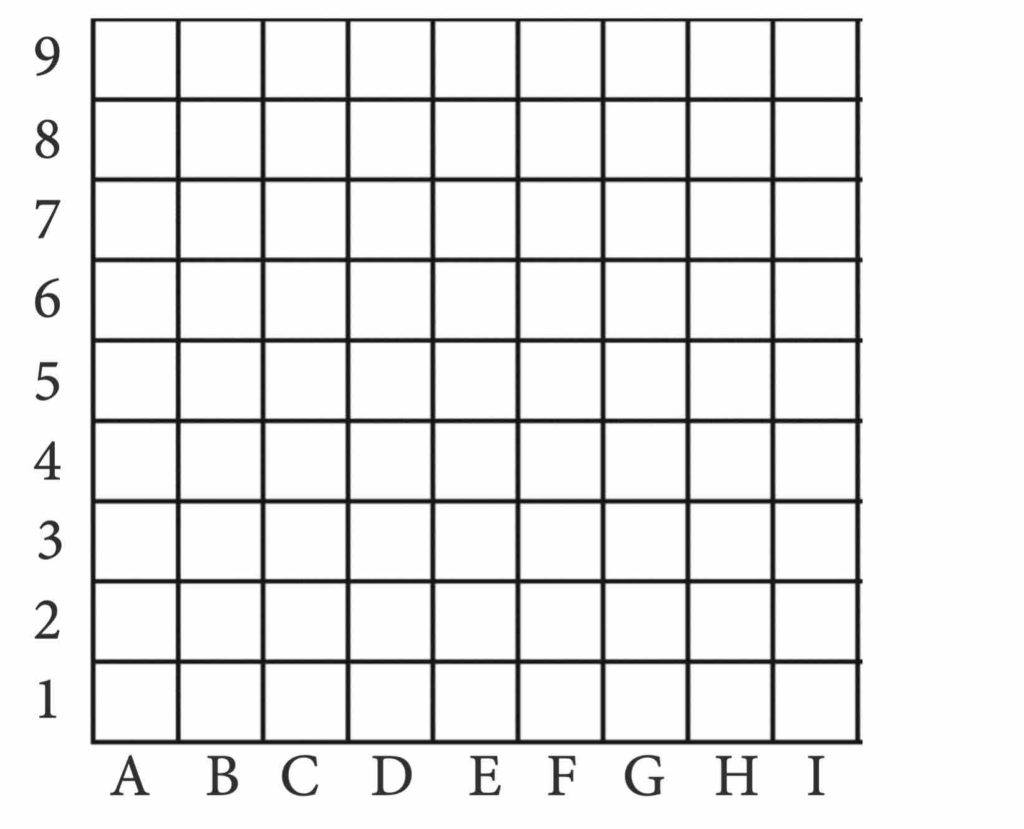
How to play:
- Each player has a blank grid with either coordinates or grid references.
- They plot a shape on the grid and make a note of the grid reference points / coordinates
- Player 1 goes first and calls out their first coordinate / grid reference.
- On a blank grid, player 2 marks the coordinate / grid reference.
- Keep going until player 2 has plotted all the points. Once completed, they check theirs matches with the other player’s and name the shape.
- Players then swap over.
For the battleships grid and all the other printables you’ll need download the free accompanying resource pack.
KS2 Maths games printables
All the printable resources you'll need to complete these games
Download Free Now!More useful year 4 resources
Maths games for year 5
In year 5, children consolidate their knowledge of written multiplication and begin to learn how to multiply 3 and 4-digit numbers by a 2-digit number. They also are introduced to prime numbers. With another large fractions topic, children build upon the fraction knowledge gained in year 4. In this section of year 5 maths games for KS2, we focus on written multiplication, prime numbers and addition/subtraction of fractions.
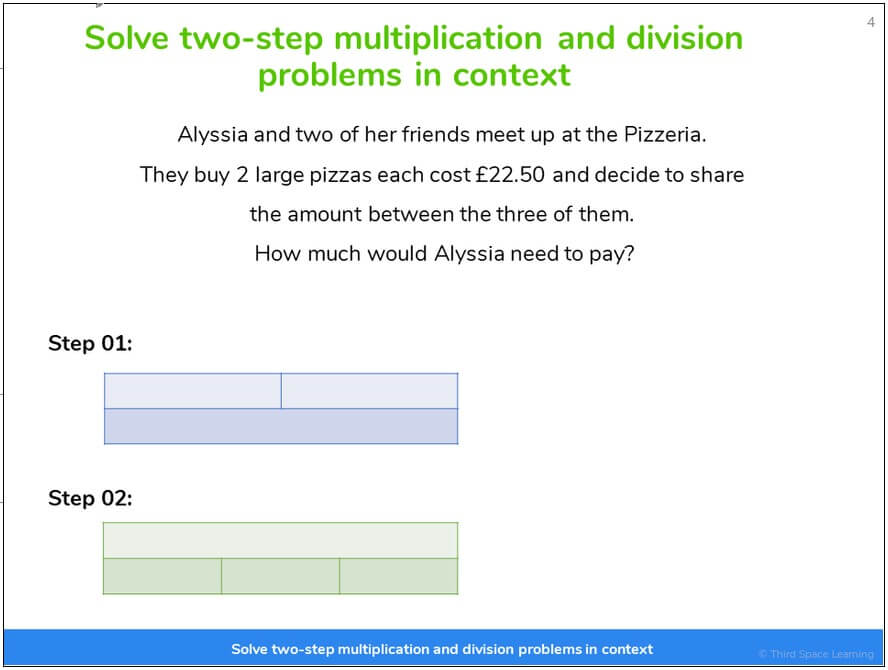
Year 5 maths game 1: how many ways?
By year 5, children should be confident with all four written methods. This KS2 maths game is good for getting children to practise the four written methods, as well as bringing in other mathematical calculations, such as fractions.
What you will need to play:
- 2 or more players
- A dice
How to play:
- Throw the dice 4 times to generate a 4 digit number
- Players then have 3 minutes to make as many different calculations with the target numbers as an answer.
- 1 point is given for each correct calculation, using an operation which hasn’t been used before. For example, a point is given for an addition calculation, but if a second addition calculation is recorded, a 2nd point wouldn’t be given.
- If a 3, 2, 1 and 6 were thrown, this would give a target number of 3216.
- The players could create an addition calculation, e.g. 1568 + 1648 = 3216, or a subtraction calculation, e.g. 4536 – 1320 = 3216. Another example would be a calculation involving fractions, e.g. ½ of 6432 = 3216
Year 5 maths game 2: product hunt
This maths game for KS2 enables children to practice the written method of multiplication, in a more fun and motivational way then just working through calculations on a worksheet.
What you will need to play:
- 2 players
- 0-9 digit cards
- Paper and pen
How to play:
- Shuffle the cards and place in the middle of the table, face down.
- Players take it in turns to take a card and place it face up on the table.
- Continue until 4 cards have been selected.
- Once the 4 cards have been chosen, players have 2 minutes to make as many multiplication questions and calculate the answers as they can (e.g. if the cards 2,9.5 and 1 were chosen, they could write down the calculation 291 x 5.
- Children can be encouraged to multiply by both 1 and 2 digit numbers.
Year 5 maths game 3: prime numbers game
In year 5, children are introduced to prime numbers. This is a good KS2 maths game for helping children to learn which numbers are prime.
What you will need to play:
- 2 or more players
- Pack of cards (Ace = 1, Jack = 11, Queen = 12 and King =13)
- List of prime numbers (optional) – 2, 3, 5, 7, 11, 13, 17, 19, 23, 29, 31, 37, 41, 43, 47, 53, 59, 61, 67, 71, 73, 79, 83, 89, 97, 101, 103, 107, 109, and 113
How to play:
- Shuffle the cards and deal 11 cards to each player, which they hold in their hand. The top card of the remainder of the pack is turned over and is the “starting number”.
- The non-dealer (or person to the left of the dealer) adds a card from their hand that adds to the starting card to equal a prime number.
- The next player then tries to add to that total to equal a larger prime.
- When a player can no longer add a card that sums up to a prime the hand is over, and the last person to make a prime gets a point.
- The first player to score 5 points is the winner.
Year 5 maths game 4: adding fractions game
In year 5, children are expected to add and subtraction fractions with the same denominator and fractions with different denominators which are multiples of the same number.
What you will need to play:
- 2 or more players
- 1 dice
- Blank fractions sheet (See downloadable resources)
- Pen/pencil
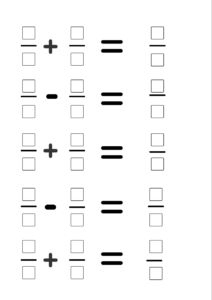
How to play:
- Each player has a blank fractions page.
- Take it in turns to throw the dice and each player decides which box on their sheet to put the number in
- Once for numbers have been generated and all 4 boxes contain a number, each player adds their fractions together.
- The player who has made the greatest fraction, when the 2 are added together, scores 2 points.
- If both players make the same sized fraction, each player scores 1 point.
- The winner is the first player to reach 10 points.
More useful year 5 resources
Maths games for year 6
In year 6, children are expected to work with larger numbers for the 4 written calculations. They are introduced to algebra, ratio and proportion for the first time. year 6 children are also able to cope with slightly more complex game play.
Year 6 maths game 1: algebra 3 in a row
Algebra is a topic children sometimes perceive to be difficult. This KS2 maths game builds children’s confidence with algebra.
What you will need to play:
- 2 players
- Algebra game board (see downloadable resources)
- Equations list (see downloadable resources)
- 20 counters (2 colours)
- 2 dice (can be just 1)
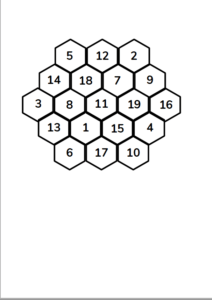
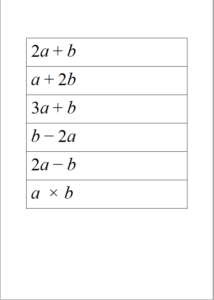
How to play:
- The first player throws both dice.
- With the 2 numbers generated, they decide which number will represent ‘a’ and which number will represent ‘b’
- They then choose one of the 6 equations, using the 2 numbers generated to represent a and b.
- They work out the answer and cover the number with a counter.
- The next player does the same.
- Players take it in turns, until one player has positioned 3 counters in a row. They are the winner.
Year 6 maths game 2: countdown
This is a good KS2 maths game to play with year 6 children. It works well in small groups, or as a whole class activity and encourages players to think deeply, to identify calculations which will get them to the target number.
What you will need to play:
- 2 or more players
- 4 ‘large number’ cards – 25, 50, 75, 100
- 2 sets of 1-10 cards
How to play:
- Set out the large number cards face down in one pile and the small number cards face down in another pile.
- Players take it in turns to choose a card from either the small or the large number piles and place it face down on the table.
- Once there are 6 cards face up on the table, the target number needs to be generated
- The target number can be generated by picking 3 number cards from a pile of 0-9 cards.
- Once the number has been generated, children have 2 minutes to try and reach that total using the 6 cards selected.
- Children can use any calculation using the 6 numbers, but each number can only be used once.
- The winner is the first person to reach the target number or the person to have the closest answer after 2 minutes.
Year 6 maths game 3: fractions, decimals and percentages snap
In year 6, children build on the work on fractions and decimals from year 5. They are expected the recognise equivalent fractions, decimals and percentages. This game will help children practise this.
What you will need to play:
- 2 players
- A set of fraction, decimal and percentage cards (shuffled- see downloadable resources)
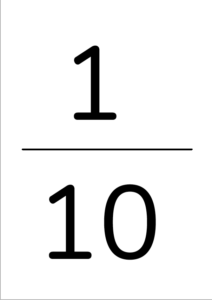
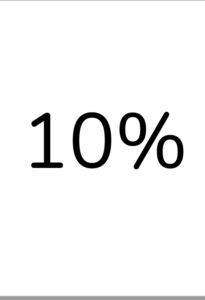
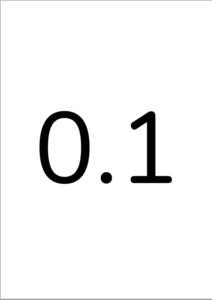
How to play:
- Place the shuffled pile of cards face down on the table.
- Take in turns to turn over a card. If 2 cards are turned over with matching fractions/ decimals/ percentages, e.g. 50% and ½ , then the first player to call out ‘snap’ and put their hand on the pile gets to keep all the cards put down so far.
- The winner is the player at the end of the game with the most pairs of cards.
Year 6 maths game 4: multiplying fractions game
What you will need to play:
- 2 players
- A set of 1-9 cards.
- Blank fractions sheet (see downloadable resources)
- Pen

How to play:
- Each player has a blank fractions page.
- Take it in turns to throw the dice and each player decides which box on their sheet to put the number in
- Once for numbers have been generated and all 4 boxes contain a number, each player multiplies their fractions together.
- The player who has made the greatest fraction, when the 2 are multiplied together, scores 2 points.
- If both players make the same sized fraction, each player scores 1 point.
- The winner is the first player to reach 10 points.
More useful year 6 resources
Mental maths games KS2
Mental maths games at KS2 are great for practising a range of mental maths concepts, whilst not requiring resources or time to set up. They can be used as a quick warm up at the start of a lesson, a fun way to consolidate learning at the end of a lesson, or as a time filler at any point in the day.
Mental maths game 1: maths, paper, scissors
This is KS2 maths game that requires no set-up and can be used to addition, subtraction and multiplication.
What you will need to play:
- 2 players
How to play:
- Both players stand facing each other.
- Similar to the traditional game of ‘paper, scissors, stone’, players hold one hand out in front but this time call out ‘maths, paper, scissors’. On ‘scissors’, they hold out any number of fingers.
- Players then have to race to add together the number of fingers they are holding out to the number of fingers the other player is holding out.
- The winner is the first player to call out the total.
- This can be adapted by having both children using 2 hands, to make larger numbers.
- The game can also be played as a subtraction game, subtracting the smallest from the biggest number or a multiplication game (multiplying the 2 numbers together).
Mental maths games 2: bang bang
This is a fun times tables game and good for practising the instant recall off tables. It can be adapted to suit other mental maths skills, such as number bonds, quick addition/subtraction of 2 digit numbers, fractions of amounts etc.
What you will need to play:
- 2 players at a time, but a whole class game.
How to play:
- 2 players stand at the front of the classroom back to back, cowboy shootout style.
- The teacher, or the game leader calls out a times table, for example ‘what is 8 x 3?’
- The first player to turn, face their opponent, shout ‘bang bang’ and give the answer wins the round.
- Another member of the class then comes out to the front as ‘the challenger’.
- The winner is the last person standing once time runs out.
Mental maths game 3: The yes / no game
This is another quick and easy game to set up and can again be played at any time, when there’s a spare few minutes.
What you need to play:
- 2 or more players.
How to play:
- One player thinks of a number between 0 and 100.
- The aim for the other player (or the rest of the class, if playing as a whole class) is to ask questions to work out the number.
- The questions can only have the answer ‘yes’ or ‘no’.
- For example, the number could be 52. Questions players might ask could be: ‘Is it an odd number?’ ‘Is it over 30?’ ‘Can it be divided by 3?’ etc….
- The winner is the player to have worked out the mystery number with the fewest number of questions asked.
Mental maths game 4: 21
This simple strategy game can be played in small groups or works as a whole class activity. The game is great for getting children to think ahead, problem solving to identify the best strategy to use.
What you need to play:
- 2 or more players
How to play:
- Players take it in turns to count, starting from 1
- Each player calls out 1, 2 or 3 consecutive numbers, before it moves to the next player to carry on counting up.
- The player who ends up saying ‘21’ is out of the game.
- The game then continues, counting back from 1 to 21, until there is only one person left. They are the winner.
More mental maths resources
Problem solving games KS2
Problem solving games at KS2 are a great way for children to deepen their mathematical understanding. These KS2 maths games require children to think strategically and to approach problems in different ways.
Problem solving game 1: the 24 game
This maths game is a great problem solving and ‘low floor, high ceiling game’, as players search for a solution. They can use only the basic calculations to reach the target number, or they can utilise much more complex mathematical calculations.
What you will need to play:
- 2 or more players
- A pack of cards (number cards only)
How to play:
- Shuffle the pack of cards and lay face down on the table.
- Each player picks a card and turns it face up on the table, until there are 4 cards displayed.
- The aim of the game is to make ‘24’ using only the cards on the table and any of the 4 operations.
- For example, if they have a 6, 10, 2 and 6, the solution could be very simple, such as basic addition: 6 + 10 + 2 + 6 = 24
- Older children may include more complex operations involving brackets, for example, they may have 9, 5, 6 and 9 and solve it by 5 – (9 ÷ 9) x 6 = 24.
- If nobody is able to reach 24, the player who is the closest wins.
Problem solving game 2: nifty fifty
This KS2 maths game is good for developing logical thinking and problem solving.
What you need to play:
- 2 players
- Set of playing cards Ace to 10 (Ace is worth 1)
How to play:
- Both players select 4 playing cards.
- With the 4 cards they have 2 minutes to make a 2-digt + 2-digit number sentence which is closest to 50.
- The number sentence closest to 50 scores 1 point. If the player creates a calculation with exactly 50 as the answer, they earn 2 points.
- The winner is the player with the most points after 5 rounds.
Problem solving game 3: add them up
This is another fun low floor-high ceiling maths game for KS2.
What you need to play:
- 3, 4 or 5 players
How to play:
- Each player takes it in turns to say a number
- The number called must not be greater than 15 for 3 players, 20 for 4 players and 25 for 5 players.
- At the same time as the number is called, each player puts forward their hand, holding out 1,2,3,4 or 5 fingers.
- If the total of the fingers matches to the number called, the player wins two points.
- If they score within 2 of the total, they win one point.
- If the total fingers doesn’t match, but stays below the number called, the player wins 2 point.
- Ask children to think about how else the game could be played. Get them to think what would happen if they added their other hand in. What would be the maximum number of fingers shown.
Problem solving game 4: 5 of a kind
This problem solving game is more suited to children in upper KS2.
What you will need to play:
- 2 or more players.
- A set of cards numbered 2-9
How to play:
- Shuffle the number cards and place face down on the table.
- The first player picks one of the cards.
- This is their ‘5 of a kind’ number, so they can do any calculation the want to, but it can only contain the number 5.
- The aim of the game is to use one or more of the 5 digits to get an answer between one and ten. If for example, the player chose a 7, they would then need to use one or more of the digits to make the answer 1, 2, 3 up to 10. To make 1, they could do 7÷7. To make 2 they could do (7÷7) + (7÷7) etc….
- This is a challenging game, but the winner is the player to achieve the most answers between 1 and 10
More problem solving resources
- Maths Problem Solving At KS2
- 2 Step and Multi Step Word Problems for KS2
- Maths Investigations At KS2
Hopefully this blog has given you some ideas for KS2 maths games you could play in your classroom. Most are easy to adapt, to suit any age or the topic you are covering. Don’t just adapt the games yourself. Give children the opportunity to adapt and think up their own rules too.
Download your free KS2 Maths Games Printable Resource pack here!
Looking for more fun games to boost pupils’ learning? Look out for our top 25 maths games you can do at home, 24 KS1 maths games and our favourite times tables games and place value games.
If you want to engage children more fully with maths, Third Space Learning’s online maths lessons provide 1-to-1 support that’s personalised to children’s needs. Tutors make lessons fun, and match the interests and previous maths experience of the child being taught.
DO YOU HAVE STUDENTS WHO NEED MORE SUPPORT IN MATHS?
Every week Third Space Learning’s specialist school tutors support thousands of students across hundreds of schools with weekly online 1 to 1 maths lessons designed to plug gaps and boost progress.
Since 2013 these personalised one to one lessons have helped over 150,000 primary and secondary students become more confident, able mathematicians.
Learn how the tutoring integrates with your SEF and Ofsted planning or request a personalised quote for your school to speak to us about your school’s needs and how we can help.

